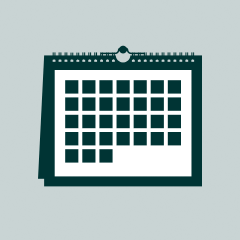Codetown
Codetown ::: a software developer's community
Java Persistence Meets the Cloud
Event Details

Time: March 2, 2011 from 6pm to 8:30pm
Location: Community Foundation of Sarasota
Street: 2635 Fruitville Rd
City/Town: Sarasota
Website or Map: http://maps.google.com/maps?o…
Event Type: meeting
Organized By: David Moskowitz
Latest Activity: Apr 8, 2011
Event Description
You've Been Lied To!
You've been told for years that using a persistence framework will insulate your application from changes to the database. As with other such claims, this turned out to be false. When porting a J2EE application to a NoSQL-style system, there are a number of factors to consider.
In this presentation, Tim will take a traditional J2EE application and port it to Google's App Engine. Specific focus will be on the various persistence technologies: Hibernate, SpringJDBC, JPA, JDO, and DAOs.
The goal of this session is to have an interactive discussion about how to take a traditional app, and enable it for deployment in a Cloud environment.
About the presenter:
Tim Crowley is an Enterprise Architect who works for an International company that makes Machines for Business. By day, he focuses on integrating global systems. By night, he likes to explore new and emerging technologies.
The event will be hosted by Community Foundation of Sarasota, located at 2635 Fruitville Rd, Sarasota, FL 34237, which is west of exit 210 off I75.
Food and refreshments will be provided by Infoblazer
Meeting Schedule:
* 6-6:45 PM: Networking
* 6:45 - 8:30 PM: Presentation
All Are welcome. Please RSVP.
Comment Wall
Comment
-
Comment by David Moskowitz on April 8, 2011 at 8:37pm
-
The presentation materials are available on Tim Crowley's web site.
Notes
Welcome to Codetown!
 Codetown is a social network. It's got blogs, forums, groups, personal pages and more! You might think of Codetown as a funky camper van with lots of compartments for your stuff and a great multimedia system, too! Best of all, Codetown has room for all of your friends.
Codetown is a social network. It's got blogs, forums, groups, personal pages and more! You might think of Codetown as a funky camper van with lots of compartments for your stuff and a great multimedia system, too! Best of all, Codetown has room for all of your friends.
Created by Michael Levin Dec 18, 2008 at 6:56pm. Last updated by Michael Levin May 4, 2018.
Looking for Jobs or Staff?
Check out the Codetown Jobs group.
InfoQ Reading List
TanStack Releases Framework Agnostic AI Toolkit

Introducing TanStack AI: a revolutionary, framework-agnostic toolkit empowering developers with unparalleled control over their AI stack. This open-source release features a unified interface across multiple providers and ensures type safety with innovative isomorphic tools. Say goodbye to vendor lock-in and hello to freedom in AI development!
By Daniel CurtisWhat Testers Can Do to Ensure Software Security

A secure software development life cycle means baking security into plan, design, build, test, and maintenance, rather than sprinkling it on at the end, Sara Martinez said in her talk Ensuring Software Security. Testers aren’t bug finders but early defenders, building security and quality in from the first sprint. Culture first, automation second, continuous testing and monitoring all the way.
By Ben LindersAWS Previews Route 53 Global Resolver to Decouple DNS from Regional Failures

AWS previews Route 53 Global Resolver, using Anycast to decouple DNS from regional failures. It simplifies hybrid setups with unified public/private resolution, DoH/DoT, and Zero-Trust security.
By Steef-Jan WiggersArticle: Agentic Terminal - How Your Terminal Comes Alive with CLI Agents

In this article author Sachin Joglekar discusses the transformation of CLI terminals becoming agentic where developers can state goals while the AI agents plan, call tools, iterate, ask for approval where needed, and execute the requests. He also explains the planning styles for three different CLI tools: Gemini, Claude, and Auto-GPT.
By Sachin JoglekarFacebook Survey Reveals Growing Adoption of Typed Python for Improved Code Quality and Flexibility

Conducted among over 1,200 respondents, Facebook's 2025 Typed Python Survey highlights how and why Python developers have increasingly adopted the language's type hinting system. The survey also sheds light on what developers value most, as well as their biggest frustrations and wishes.
By Sergio De Simone
© 2026 Created by Michael Levin.
Powered by
![]()
RSVP for Java Persistence Meets the Cloud to add comments!
Join Codetown